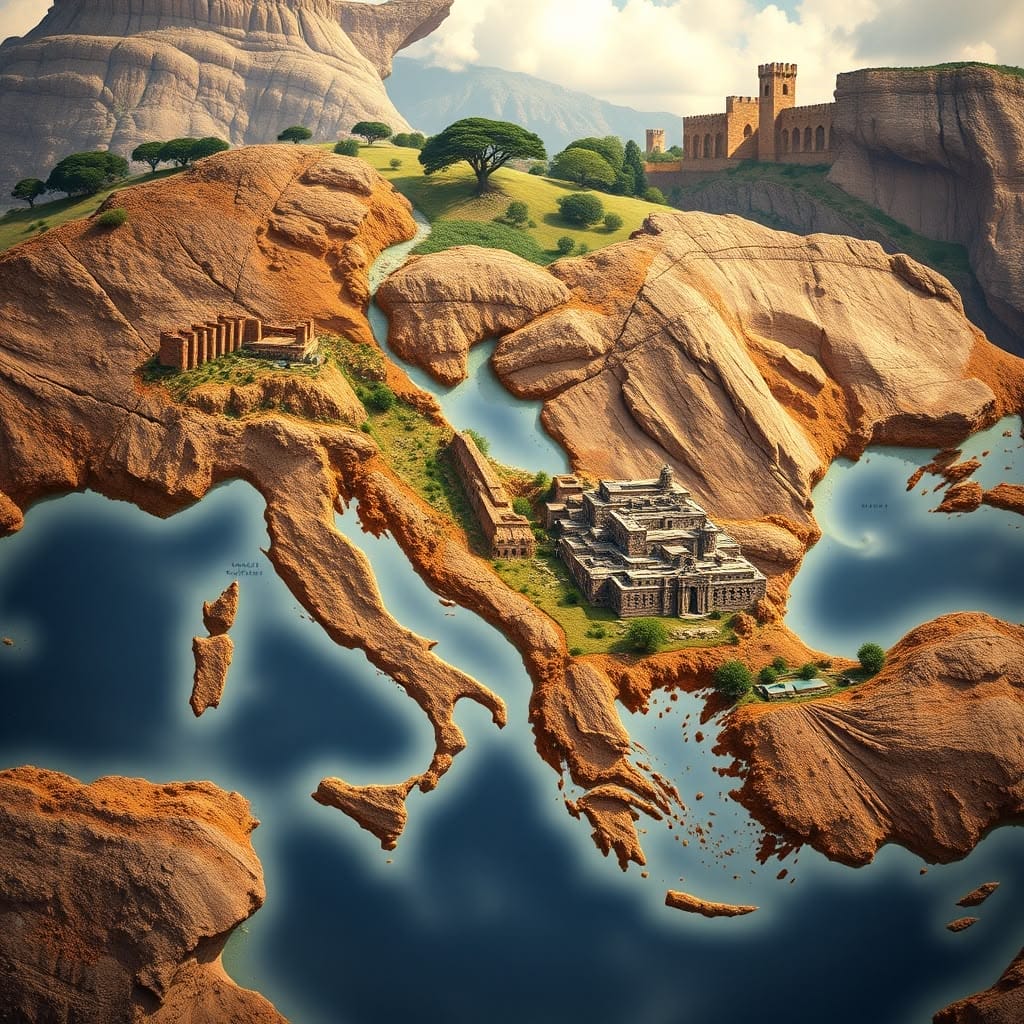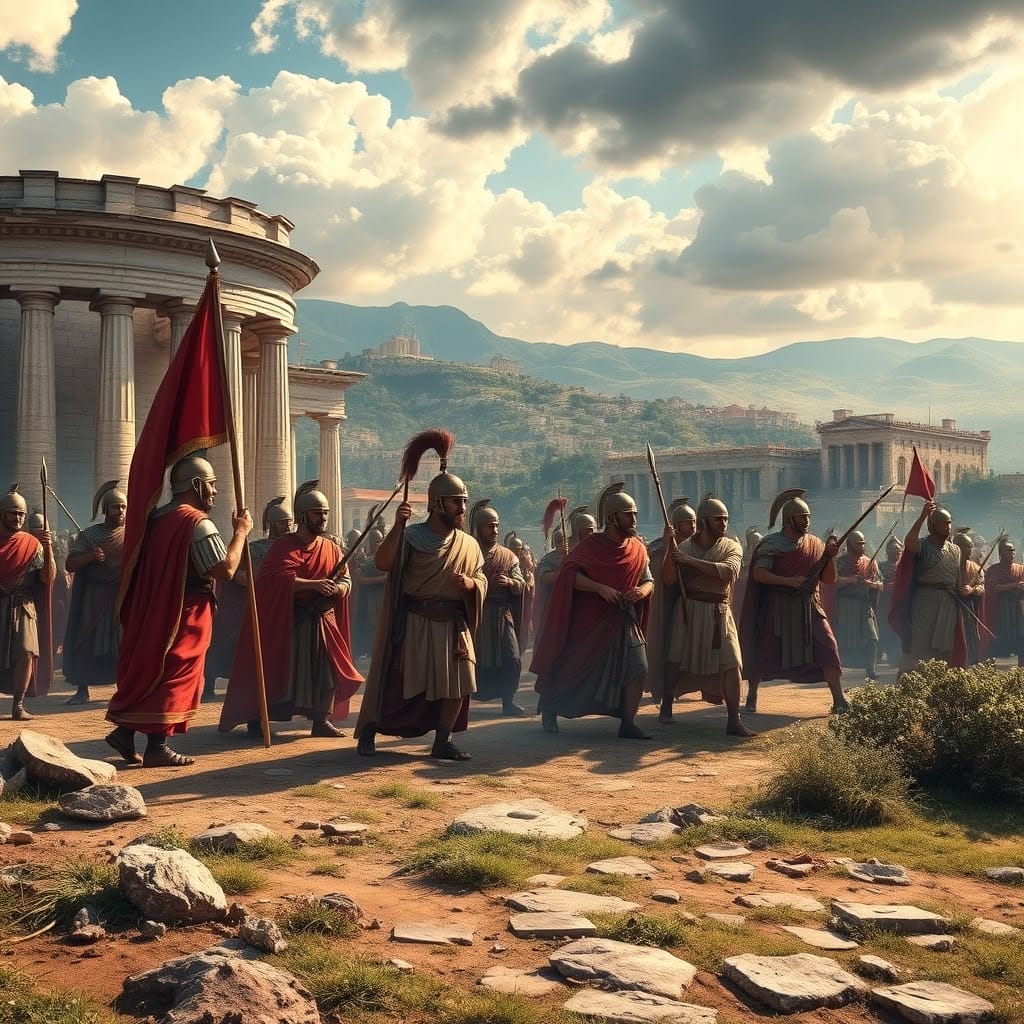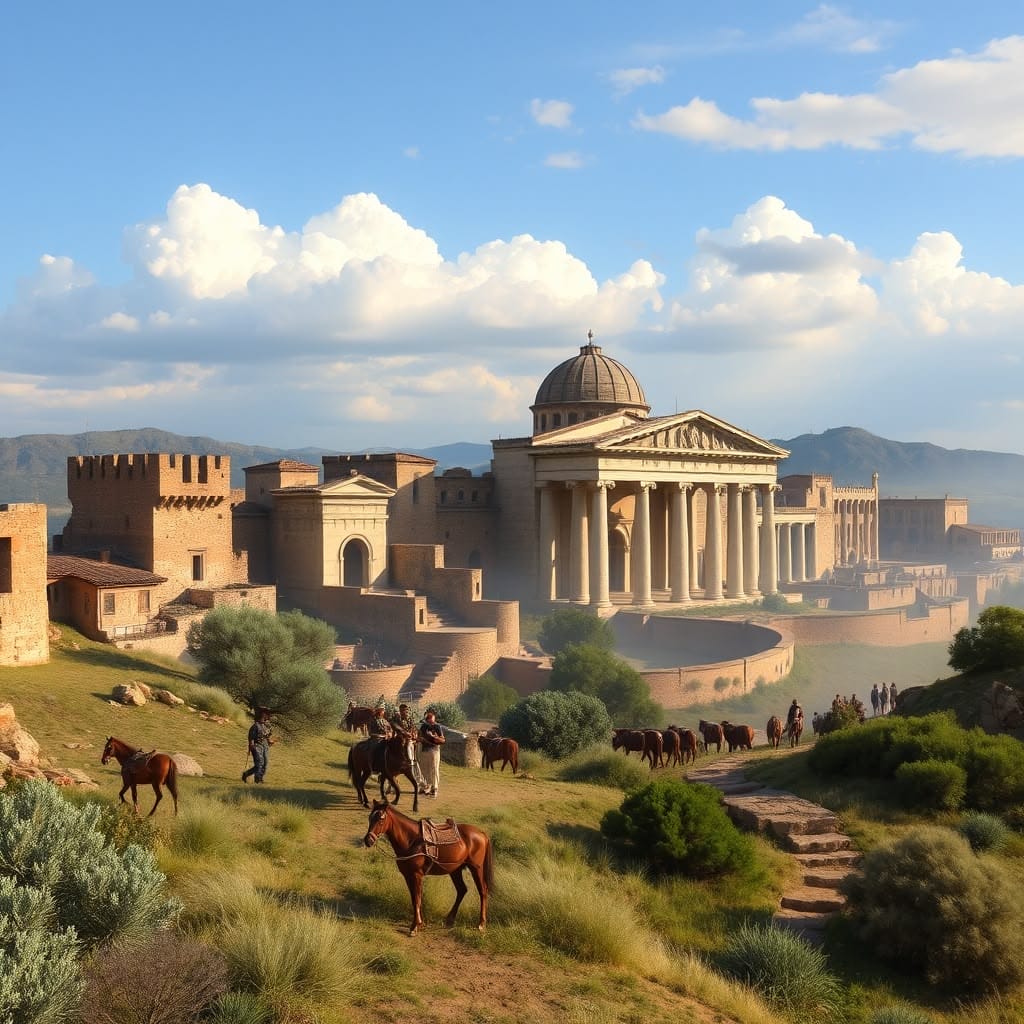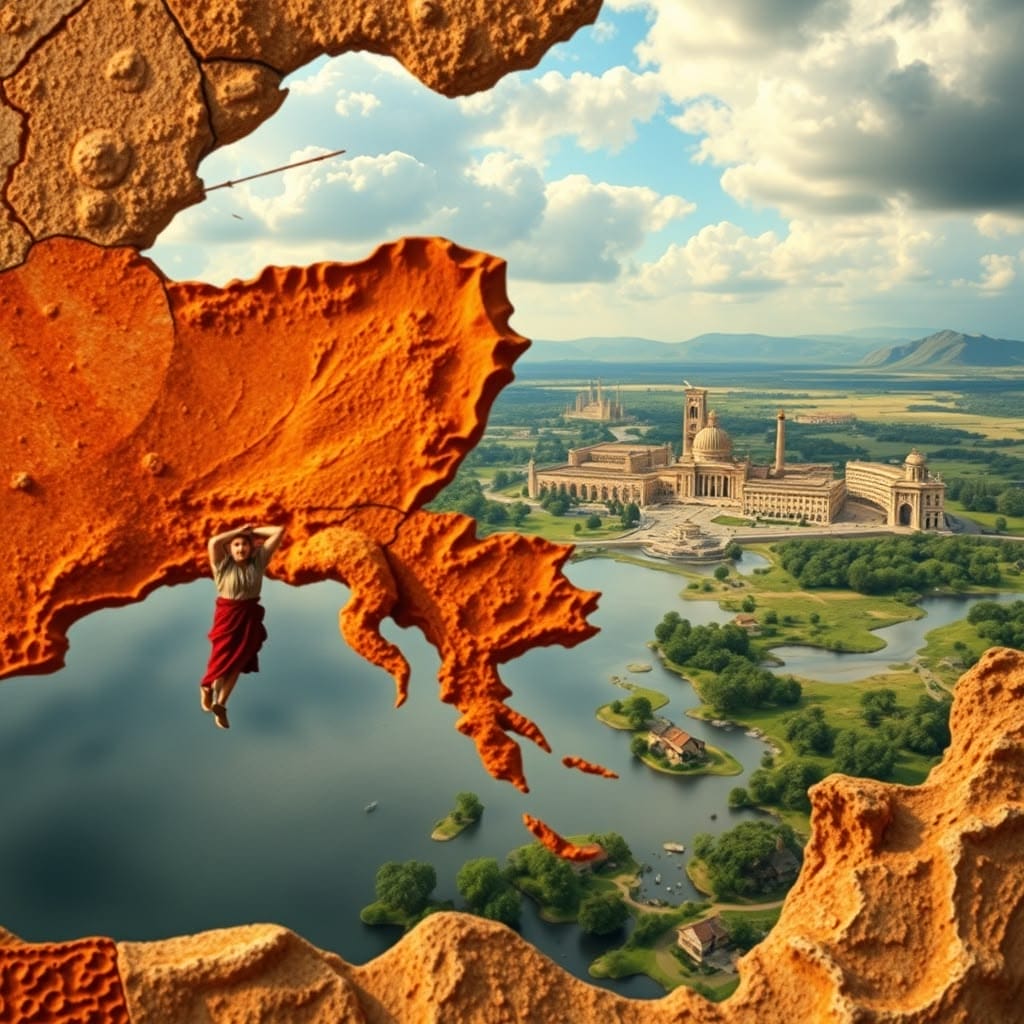The Roman Empire is a powerful example of how military strength and strategic conquests can shape history. Its growth was largely driven by important military campaigns that expanded its territory and influence.
In this article, we will explore some of the most significant military campaigns that shaped the empire—focusing on the conquest of Italy, the Punic Wars, and the Macedonian Wars. We will also examine how these conquests influenced Roman society and culture. Through an understanding of these pivotal moments in history, you can appreciate how Rome transformed from a city-state into one of history’s greatest empires.
The Conquest of Italy
The Roman conquest of Italy was a crucial period that established Rome’s power over the Italian peninsula. Early battles with nearby Latin cities and Etruscan towns played a significant role in setting the stage for Rome’s expansion.
Key Conflicts
1. Latin War (340–338 BC)
Rome fought against its Latin allies in order to strengthen its control. This conflict allowed Rome to take charge of the Latin League and eventually dissolve the independent Latin cities.
2. Wars Against the Etruscans
Rome’s conflicts with Etruscan cities further solidified its influence in central Italy. The decisive victory at the Battle of Veii in 396 BC showcased Roman military strategy and determination.
Military Strategies and Tactics
Several key strategies contributed to Rome’s military success during these early wars:
- Utilization of Legions: The Roman legion system, known for its flexibility and discipline, allowed forces to quickly adapt to different battlefield conditions. This structure often outmaneuvered less organized opponents.
- Incorporation of Allies: Rome effectively included allied troops from conquered territories, expanding its military ranks without straining resources. This practice not only increased numbers but also fostered loyalty among newly subjugated peoples.
- Siege Warfare: Many Roman victories involved advanced siege tactics, as seen in the prolonged siege of Veii. Romans used their engineering skills to build siege engines and ramps that facilitated attacks on fortified positions.
Political Landscape and Regional Stability
The aftermath of these conquests brought about significant changes in Rome’s political structure:
- Centralized Power: By defeating rival city-states, Rome shifted from being a city-republic towards having a more centralized authority. Controlling large areas allowed for better governance and resource distribution.
- Integration of Cultures: The incorporation of conquered territories introduced diverse cultural influences into Roman society. This exchange enriched Roman culture while promoting Hellenization—a process that blended Greek cultural elements with Roman traditions.
- Establishment of Provincial Governance: After successful campaigns, Rome set up provinces governed by appointed officials. This system improved administrative efficiency and facilitated trade across newly acquired regions.
The conquest of Italy laid the groundwork for future expansions beyond the peninsula, leading to conflicts with powerful enemies like Carthage and Macedon. Each victory strengthened Rome’s military power while fostering a growing sense of identity among its citizens—both crucial elements as they embarked on larger campaigns throughout Mediterranean territories.

The Punic Wars: A Defining Turning Point
The Punic Wars were a series of three crucial military conflicts fought between Rome and Carthage from 264 to 146 BC. These wars marked significant turning points in the establishment of Roman dominance over the western Mediterranean. Each phase of the conflict contributed not only to territorial expansion but also to the integration of diverse cultures under Roman rule.
The First Punic War (264–241 BC)
Background
Tensions between Rome and Carthage arose primarily over control of Sicily, a strategically vital island situated between the two powers. Both sought supremacy in trade and military influence in the region.
Key Events
- The war commenced with a naval battle at Messana, where Romans intervened against Carthaginian forces.
- Rome’s naval capabilities were initially lacking; however, they quickly adapted by developing innovative ship designs, including the corvus, a boarding device that allowed them to engage in close combat.
Consequences
Rome emerged victorious, acquiring Sicily as its first province outside Italy. This acquisition set a precedent for future conquests and showcased Rome’s ambition on an international scale.
The Second Punic War (218–201 BC)
The second conflict proved to be one of the most dramatic in ancient history, mainly due to Hannibal Barca’s audacious strategies.
Hannibal’s Campaign
Hannibal’s famous march across the Alps with war elephants stunned Rome. His early victories at battles such as Trebia and Lake Trasimene demonstrated his tactical brilliance and severely challenged Roman authority.
Turning Point at Zama
Despite Hannibal’s successes, Scipio Africanus turned the tide with strategic planning. The decisive Battle of Zama (202 BC) saw Scipio defeat Hannibal, effectively ending Carthage’s hopes of reclaiming dominance in Italy.
Impact
The defeat forced Carthage to cede territories and pay substantial reparations. This victory solidified Rome’s control over much of the western Mediterranean and set the stage for future expansions.
The Third Punic War (149–146 BC)
The final conflict stemmed from ongoing tensions and animosity towards Carthage.
Reasons for Conflict
Following the previous wars, Carthage remained economically weakened yet resilient. Its recovery raised suspicion among Roman leaders who sought to eliminate any potential threat from their former rival.
Carthage’s Downfall
Rome initiated a brutal siege that culminated in the complete destruction of Carthage. This catastrophic end eliminated Carthage as a power entirely and further expanded Roman territory into North Africa.
Cultural Integration Through Conquest
Each victory during the Punic Wars not only expanded Roman territory but also facilitated cultural exchanges that enriched Roman society. As new regions came under Roman influence:
- Art and Architecture: Artistic styles and architectural techniques from conquered lands influenced Roman designs.
- Governance Structures: Incorporation of local governance methods enhanced administrative efficiency throughout newly acquired territories.
- Societal Norms: Diverse practices merged with Roman traditions, contributing to a unique cultural tapestry within the empire.
These campaigns illustrated how military prowess could lead to vast territorial gains while simultaneously integrating various cultures into the fabric of Roman life.

Macedonian Wars: Expansion into Greece and Asia Minor
The Macedonian Wars were a crucial period in Rome’s expansion through conquest, especially as it aimed to extend its influence into Greece and Asia Minor. Starting in 214 BC, these wars mainly focused on protecting Greek city-states from the aggressive ambitions of King Philip V of Macedonia. Rome’s involvement sought not only to defend but also to establish control over a region known for its rich cultural heritage and military traditions.
Overview of the Wars
- First Macedonian War (214–205 BC): This war was triggered by Philip V’s attempts to dominate the Greek states. Roman forces engaged with limited success, focusing on forming alliances with local powers.
- Second Macedonian War (200–197 BC): Rome initiated this war to counter Philip V’s growing power. The decisive victory at the Battle of Cynoscephalae in 197 BC demonstrated Rome’s military superiority and solidified its reputation as a formidable force against traditional Greek armies.
- Third and Fourth Macedonian Wars (171–148 BC): These wars saw continued struggles resulting in swift Roman victories. The defeat of Perseus, Philip’s son, marked the end of Macedonian resistance and further strengthened Roman control.
Significant Battles
The Battle of Cynoscephalae stands out as a turning point in the Second Macedonian War. Roman general Titus Quinctius Flamininus demonstrated effective tactics against the Macedonian phalanx, employing flexibility and discipline that highlighted the adaptability of Roman forces. This victory not only crushed Philip V’s aspirations but also proclaimed the “Freedom of the Greeks,” showcasing Rome as a liberator rather than an oppressor.
Consequences of the Macedonian Wars
The outcomes of these wars had profound implications for both Rome and Greece:
- Political Influence: Following their victories, Romans established protectorates over several Greek city-states, ensuring political control while allowing a semblance of local governance.
- Cultural Exchange: As regions fell under Roman rule, cultural integration flourished. The rich traditions, philosophies, and artistic expressions from conquered territories influenced Roman society profoundly.
- Expansion into Asia Minor: Subsequent conflicts with the Seleucid Empire extended Roman influence further eastward. The defeat of Seleucid forces allowed for greater territorial consolidation and access to lucrative trade routes.
Each military campaign within the Macedonian Wars not only expanded territorial boundaries but also facilitated essential cultural exchanges that enriched Roman civilization. This era exemplified how conquest served as a vehicle for both political dominance and cultural assimilation across diverse landscapes.

Cultural Growth Through Conquest
The expansion of the Roman Empire through military campaigns not only increased territorial dominion but also ignited a process of cultural integration across its diverse provinces. Each conquest brought new cultures into contact with Roman society, fostering a dynamic environment where ideas and practices exchanged freely.
Key Aspects of Cultural Integration
1. Art and Architecture
- The influence of conquered cultures profoundly shaped Roman art and architecture.
- Elements from Greek sculpture and Hellenistic styles became integral to Roman artistic expression.
- Architectural techniques such as the use of columns, domes, and arches derived from earlier civilizations were adapted and perfected by Romans, evident in structures like the Pantheon and the Colosseum.
2. Governance Structures
- Rome’s administrative practices evolved as it absorbed various governance models from conquered territories.
- Local customs and political systems were often integrated into Roman law, leading to a hybrid system that respected regional traditions while maintaining central authority.
- The establishment of provinces allowed for localized governance, which facilitated smoother administration across vast distances.
3. Societal Norms
- The interaction with diverse societies introduced new philosophies, religions, and social customs to Roman life.
- The spread of Hellenistic philosophy influenced Roman thought, leading to a rich intellectual discourse that encompassed Stoicism and Epicureanism.
- Religious practices also transformed; the incorporation of deities from different cultures enriched the Roman pantheon, blending local beliefs with traditional Roman spirituality.
Impacts on Daily Life
Cultural exchanges under Roman rule significantly altered daily life for both Romans and the subjugated peoples.
- Language: Latin became the lingua franca across many regions, yet local languages persisted and influenced vernaculars in various provinces.
- Cuisine: Conquests brought new agricultural products such as olives, grapes, and grains into the Roman diet. Culinary practices merged as ingredients and cooking techniques were shared among cultures.
- Entertainment: Amphitheaters showcased not only gladiatorial games but also performances influenced by Greek theater. This blending created a rich tapestry of entertainment options that reflected both local traditions and broader imperial trends.
Cultural integration was not simply an act of assimilation; it was a reciprocal process where both Romans and conquered peoples shaped one another’s identities. The result was an empire characterized by diversity yet unified under shared governance. This cultural synthesis enriched the Roman Empire, contributing to its longevity and influence well beyond its territorial boundaries. The legacy of these cultural exchanges continues to resonate through history, seen in modern art, architecture, legal systems, and societal norms that echo ancient Rome’s expansive reach.

The Legacy Of Expansion Through Conquest In The Roman Empire
The military campaigns of the Roman Empire not only shaped its physical boundaries but also left a lasting legacy that influenced various aspects of European civilization. The legacy of conquest in Rome is evident in several key areas:
1. Language
Latin, the language of Rome, became the foundation for many modern languages, including French, Spanish, Italian, Portuguese, and Romanian. This linguistic influence spread across Europe as Roman territories expanded.
2. Legal Systems
Roman law served as a basis for legal systems in many European countries. Concepts such as trial by jury, civil rights, and legal representation trace their roots to Roman jurisprudence.
3. Religion
The conquests facilitated the spread of Christianity throughout the empire. As Rome expanded into diverse cultures, it played a crucial role in the dissemination of Christian beliefs and practices, which would later shape Western religious landscapes.
Key military campaigns that contributed to this legacy include:
- Conquest of Italy: Early conflicts with neighboring Latin cities and Etruscan towns established Rome’s dominance over the Italian peninsula. The consolidation of power during these wars allowed for cultural integration within Italy.
- Punic Wars: These pivotal wars against Carthage solidified Rome’s control over the western Mediterranean. The acquisition of territories such as Sicily not only expanded Roman influence but also integrated new cultural elements into Roman society.
- Macedonian Wars: By extending its influence into Greece and Asia Minor, Rome encountered rich traditions and cultures that influenced its own art, philosophy, and governance structures.
The Expansion Through Conquest: Key Campaigns That Built an Empire are not just tales of military triumph but also narratives of cultural exchange and integration. As Rome absorbed diverse peoples into its fold, it fostered an environment where different customs blended with Roman ideals. This fusion laid the groundwork for many aspects of European civilization that persist to this day, ensuring that the legacy of conquest continues to resonate throughout history.

FAQs (Frequently Asked Questions)
What were the key military campaigns that contributed to the expansion of the Roman Empire?
The key military campaigns that contributed to the expansion of the Roman Empire include the conquest of Italy, the Punic Wars against Carthage, and the Macedonian Wars. Each campaign played a significant role in extending Roman territory and consolidating power.
How did Rome’s conquest of Italy influence its political landscape?
Rome’s conquest of Italy laid the foundation for its territorial expansion by defeating neighboring Latin cities and Etruscan towns. This not only increased Rome’s territory but also established political stability and dominance in the region, allowing for further conquests.
What were the main outcomes of the Punic Wars?
The Punic Wars resulted in Rome solidifying its dominance over the western Mediterranean. Key outcomes included the acquisition of Sicily as Rome’s first province outside Italy, significant military victories against Carthage, and ultimately leading to Carthage’s destruction in the Third Punic War.
What role did cultural integration play in Rome’s expansion through conquest?
Cultural integration was a crucial aspect of Rome’s expansion through conquest. As territories were acquired, new cultures came under Roman rule, influencing Roman art, architecture, governance structures, and societal norms, thereby enriching Roman culture.
What were some significant battles during the Macedonian Wars?
Significant battles during the Macedonian Wars include the Battle of Cynoscephalae in 197 BC, which showcased Roman military superiority over Greek city-states. These victories extended Roman influence into Greece and Asia Minor.
How did military campaigns affect the legacy of the Roman Empire?
Military campaigns shaped not only the physical boundaries of the Roman Empire but also left enduring legacies such as language, law systems, and religion across Europe. These influences persisted even after the fall of the Western Roman Empire.

